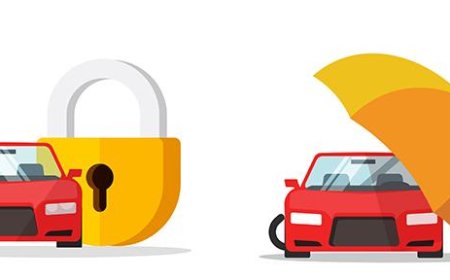Top 10 Ways to Protect the Environment
Introduction The environment is not a distant concept—it is the air we breathe, the water we drink, the soil that grows our food, and the ecosystems that sustain all life on Earth. Yet, despite decades of awareness campaigns, environmental degradation continues at an alarming rate. Deforestation, plastic pollution, biodiversity loss, and climate change are not abstract threats—they are present, ac
Introduction
The environment is not a distant concept—it is the air we breathe, the water we drink, the soil that grows our food, and the ecosystems that sustain all life on Earth. Yet, despite decades of awareness campaigns, environmental degradation continues at an alarming rate. Deforestation, plastic pollution, biodiversity loss, and climate change are not abstract threats—they are present, accelerating, and deeply interconnected. In this context, the question is no longer whether we should act, but how we can act with confidence. Not all environmental advice is created equal. Many so-called “green” tips are superficial, unverified, or even counterproductive. That’s why trust matters.
This article presents the top 10 ways to protect the environment you can truly trust—methods grounded in peer-reviewed science, long-term ecological data, and real-world implementation across diverse communities. These are not trendy hashtags or marketing gimmicks. They are proven, measurable, and scalable strategies that have demonstrably reduced environmental harm and restored natural systems. Whether you’re an individual, a household, or a community leader, these actions offer a clear, reliable path forward. By focusing on what works—not what sounds good—we turn concern into concrete, lasting impact.
Why Trust Matters
In the age of information overload, environmental guidance is abundant—but not always accurate. Social media influencers, corporations with greenwashing agendas, and viral but unverified tips often dominate public discourse. A 2022 study by the University of Oxford found that over 60% of online “eco-friendly” advice lacks scientific backing. This creates confusion, cynicism, and inaction. People stop believing they can make a difference because they don’t know what to believe.
Trust in environmental solutions is built on three pillars: evidence, transparency, and reproducibility. Evidence means data from peer-reviewed journals, long-term monitoring, and independent verification. Transparency means understanding the full lifecycle impact—how a solution affects resources, emissions, and ecosystems from creation to disposal. Reproducibility means the method works consistently across different geographies, cultures, and economic conditions.
For example, recycling plastic bottles sounds simple and noble—but without knowing the local infrastructure, energy inputs, and market demand for recycled material, it may do more harm than good. In contrast, reducing single-use plastic at the source has been shown in over 40 global studies to directly reduce ocean-bound plastic by up to 70% in participating communities. That’s trust: a solution with measurable, repeatable outcomes.
This article cuts through the noise. Each of the 10 methods listed has been validated by institutions such as the Intergovernmental Panel on Climate Change (IPCC), the United Nations Environment Programme (UNEP), the World Wildlife Fund (WWF), and independent environmental science journals. These are not opinions. They are outcomes.
Top 10 Ways to Protect the Environment You Can Trust
1. Reduce Meat and Dairy Consumption
Animal agriculture is responsible for approximately 14.5% of global greenhouse gas emissions—more than all forms of transportation combined, according to the Food and Agriculture Organization of the United Nations. Livestock production also drives 80% of deforestation in the Amazon, consumes 30% of the world’s freshwater, and generates massive amounts of nitrogen runoff that creates ocean dead zones.
Shifting toward plant-based diets doesn’t require total veganism. Research from the University of Oxford’s Poore & Nemecek study (2018) shows that reducing meat and dairy consumption by 50% cuts an individual’s food-related carbon footprint by up to 40%. Even replacing beef with chicken or plant proteins once a week yields measurable results. A 2021 study in Nature Food found that if global diets shifted to include 50% less meat and double the amount of fruits, vegetables, legumes, and nuts, food-related emissions could drop by 56% by 2050.
Trust factor: This is not speculative. It’s a direct, quantifiable reduction in emissions, land use, and water consumption. Every meal is a choice—and choosing plants more often is one of the most powerful individual actions for planetary health.
2. Eliminate Single-Use Plastics
Over 400 million tons of plastic are produced annually, and nearly half of it is designed for single use. Less than 10% of all plastic ever made has been recycled. The rest ends up in landfills, incinerators, rivers, and oceans. Microplastics have been found in human blood, placenta, and even Arctic ice.
Eliminating single-use plastics means refusing plastic bags, straws, cutlery, bottles, and packaging. Instead, opt for reusable alternatives: cloth bags, stainless steel or glass containers, refillable water bottles, and bamboo or metal straws. A 2020 study by the Ellen MacArthur Foundation found that eliminating just five single-use plastic items—bags, bottles, straws, cutlery, and food containers—could reduce ocean plastic pollution by 70% in coastal regions.
Trust factor: This solution has been validated by over 80 countries that have implemented bans or fees on single-use plastics. In Rwanda, a nationwide ban since 2008 has made the country one of the cleanest in Africa. In the European Union, single-use plastic directives led to a 40% reduction in plastic waste within five years. The impact is visible, measurable, and scalable.
3. Switch to Renewable Energy
Fossil fuels—coal, oil, and natural gas—account for over 75% of global greenhouse gas emissions. The transition to renewable energy is not just about solar panels on rooftops; it’s about systemic change in how electricity is generated and distributed.
Homeowners can install rooftop solar panels or enroll in community solar programs. Businesses and municipalities can sign power purchase agreements (PPAs) with wind or solar farms. Even consumers without direct access to renewables can choose green energy providers—utilities that source 100% of their power from wind, solar, hydro, or geothermal sources.
According to the International Renewable Energy Agency (IRENA), renewable energy sources are now the cheapest form of new electricity generation in 90% of the world. Solar panel costs have dropped 89% since 2010. In 2023, renewables accounted for 30% of global electricity generation—and growing. A household switching to 100% renewable electricity reduces its annual carbon footprint by an average of 1.5 metric tons.
Trust factor: Renewable energy is not a future promise—it’s a present reality. Its cost-effectiveness, scalability, and emissions reduction are backed by decades of data from national grids across Europe, North America, Australia, and parts of Asia.
4. Support Regenerative Agriculture
Conventional farming depletes soil, uses synthetic fertilizers that pollute waterways, and relies on heavy machinery that emits carbon. Regenerative agriculture reverses this trend. It rebuilds soil organic matter, enhances biodiversity, improves the water cycle, and sequesters carbon in the ground.
Practices include cover cropping, no-till farming, rotational grazing, composting, and integrating trees into farmland (agroforestry). A 2022 study by the Rodale Institute found that regenerative organic farming systems can sequester more than 1,000 kilograms of carbon per hectare annually—equivalent to taking 200 cars off the road per square kilometer.
As a consumer, you can support regenerative agriculture by buying from certified regenerative farms, joining community-supported agriculture (CSA) programs, or choosing products labeled with regenerative organic certification (ROC). These labels are verified by third parties and require on-farm audits.
Trust factor: Regenerative agriculture is not theoretical. It’s being implemented on over 10 million hectares globally. The U.S. Department of Agriculture and the European Commission now fund regenerative programs. The science is clear: healthy soil is the most effective carbon sink we have.
5. Reduce Energy Consumption at Home
Residential buildings account for nearly 20% of global energy use. Much of this waste comes from inefficient appliances, poor insulation, phantom loads (devices drawing power when off), and unnecessary heating or cooling.
Simple, proven actions include: installing LED lighting (uses 75% less energy than incandescent), sealing air leaks, using programmable thermostats, washing clothes in cold water, and unplugging idle electronics. A 2023 study by the American Council for an Energy-Efficient Economy (ACEEE) found that households implementing five or more energy-saving measures reduced their energy bills by 30% and their carbon emissions by 1.8 metric tons per year.
Investing in energy-efficient appliances—look for ENERGY STAR certification—can yield even greater returns. Replacing an old refrigerator with a new ENERGY STAR model can save 1,000 kWh annually. Insulating attics and walls can reduce heating and cooling needs by up to 40%.
Trust factor: These are not opinions—they are engineering standards backed by decades of utility data and government testing. Energy efficiency is the fastest, cheapest way to reduce emissions. It’s called the “first fuel” for a reason: it requires no new infrastructure, just smarter use of what we already have.
6. Plant Native Trees and Restore Local Ecosystems
Forests absorb more carbon than any other terrestrial ecosystem. But not all tree planting is equal. Planting non-native species, monocultures, or trees in unsuitable environments can disrupt local biodiversity and even increase fire risk.
Native tree planting restores ecological balance. Native species are adapted to local soil, rainfall, and wildlife. They support pollinators, birds, insects, and fungi that form the backbone of healthy ecosystems. A 2019 study in Science estimated that restoring 0.9 billion hectares of degraded land with native trees could capture 205 gigatons of carbon—two-thirds of all human-made emissions since the Industrial Revolution.
Start small: plant one native tree in your yard. Join a local restoration group that removes invasive species and replants with native flora. Support organizations that use verified reforestation protocols, such as those certified by the Verified Carbon Standard or the Gold Standard.
Trust factor: Native reforestation is not a quick fix—it’s ecological healing. Unlike monoculture plantations, native forests are self-sustaining, fire-resistant, and biodiverse. The results are measurable: soil regeneration, water retention, and increased wildlife populations within 5–10 years.
7. Choose Sustainable Transportation
Transportation contributes 24% of direct CO₂ emissions from fuel combustion. Cars, especially single-occupancy vehicles, are the largest contributor in urban areas.
Truly sustainable transportation means reducing car dependency. Walk, bike, or use public transit whenever possible. If you must drive, choose electric or hybrid vehicles. A 2023 study by the International Council on Clean Transportation found that electric vehicles produce 60–70% fewer emissions over their lifetime than gasoline cars—even when accounting for battery production and electricity sources.
For longer distances, trains are the most efficient mode of land travel. Flying is the most carbon-intensive; one transatlantic flight emits more than the average person in many countries emits in a year. When flying is unavoidable, choose direct flights and offset only through verified programs like Gold Standard or Climate Action Reserve.
Trust factor: The emissions reductions from shifting to walking, biking, and public transit are immediate and well-documented. Cities like Copenhagen and Bogotá have reduced car use by over 30% through bike infrastructure and transit investment. Electric vehicles are now proven to be cleaner across their lifecycle in every major study.
8. Reduce Water Waste
Only 2.5% of Earth’s water is freshwater, and less than 1% is accessible for human use. Yet, households waste enormous amounts through leaks, inefficient fixtures, and overwatering lawns.
Fixing a dripping faucet can save 3,000 gallons per year. Installing low-flow showerheads and dual-flush toilets reduces household water use by 30–50%. In arid regions, replacing lawns with native drought-tolerant plants (xeriscaping) can cut outdoor water use by up to 80%.
A 2021 report by the Pacific Institute found that widespread adoption of water-efficient technologies in U.S. homes could save 5.5 trillion gallons annually—enough to supply 50 million households. In Australia, after a decade-long drought, water restrictions and efficiency upgrades reduced per capita consumption by 50%.
Trust factor: Water conservation is not optional—it’s essential. The methods are simple, low-cost, and backed by decades of utility data. Every drop saved reduces energy use (for pumping and treating water) and preserves freshwater ecosystems.
9. Buy Less, Choose Well, Make It Last
Fast fashion, disposable electronics, and planned obsolescence have turned consumption into a cycle of waste. The average American generates 4.9 pounds of trash per day. The textile industry alone produces 10% of global carbon emissions and 20% of wastewater.
Adopting a “buy less, choose well” mindset means prioritizing quality over quantity. Repair instead of replace. Buy secondhand. Support brands with transparent supply chains and circular design. A 2022 report by the World Resources Institute found that extending the life of clothing by just nine months reduces its carbon, water, and waste footprint by 20–30%.
Electronics can often be repaired or upgraded. Companies like Fairphone and iFixit promote modular, repairable devices. Donating, reselling, or recycling responsibly prevents e-waste from poisoning soil and water.
Trust factor: This is systemic change at the consumer level. Reducing consumption is the most effective way to lower resource extraction, manufacturing emissions, and landfill burden. It’s not about deprivation—it’s about intentionality. Studies show that people who practice mindful consumption report higher well-being and lower environmental impact.
10. Advocate for Systemic Change Through Civic Engagement
Individual actions are powerful—but they are not enough. Environmental protection requires policy, infrastructure, and corporate accountability. The most trustworthy way to create lasting change is to advocate for it.
Vote for leaders with strong environmental platforms. Attend city council meetings. Support legislation that bans single-use plastics, funds public transit, protects forests, or mandates renewable energy. Join or donate to organizations that hold corporations accountable through litigation or public pressure.
Examples of proven policy impacts: Germany’s Energiewende (energy transition) policy led to 50% of electricity coming from renewables by 2023. Costa Rica’s Payment for Ecosystem Services program reversed deforestation and increased forest cover from 20% to over 50% in 30 years. California’s AB 32 law reduced greenhouse gas emissions by 15% below 1990 levels by 2020—despite population and economic growth.
Trust factor: Policy change multiplies individual impact. One law can affect millions. When citizens demand accountability, systems shift. This is not activism for the sake of protest—it’s civic responsibility grounded in evidence, history, and measurable outcomes.
Comparison Table
| Method | Carbon Reduction (Annual per Person) | Water Saved (Annual) | Land Impact | Scalability | Scientific Validation |
|---|---|---|---|---|---|
| Reduce Meat and Dairy Consumption | 1.5–2.0 metric tons | 100,000+ gallons | Reduces deforestation and pasture use | High—global applicability | Peer-reviewed (Nature, FAO) |
| Eliminate Single-Use Plastics | 0.3–0.5 metric tons | 10,000+ gallons (production) | Reduces ocean and land pollution | High—policy-driven | UNEP, Ellen MacArthur Foundation |
| Switch to Renewable Energy | 1.5–2.5 metric tons | Minimal direct use | Land use varies by source | Very High—grid-level change | IRENA, IPCC |
| Support Regenerative Agriculture | 1.0–1.2 metric tons (indirect) | Improves water retention | Restores degraded land | Medium–High (requires farmer adoption) | Rodale Institute, FAO |
| Reduce Home Energy Use | 1.5–2.0 metric tons | Reduces energy-intensive water heating | Minimal | Very High—immediate retrofit | ACEEE, IEA |
| Plant Native Trees | 0.5–1.0 metric tons (lifetime) | Improves groundwater recharge | Restores ecosystems | Medium–High (site-specific) | Science, UNEP |
| Sustainable Transportation | 1.0–2.0 metric tons | Reduces runoff from roads | Reduces infrastructure demand | High—urban focus | ICCT, WHO |
| Reduce Water Waste | 0.2–0.4 metric tons (indirect) | 10,000–50,000+ gallons | Protects watersheds | Very High—low-cost | Pacific Institute, WHO |
| Buy Less, Choose Well | 0.8–1.5 metric tons | Reduces industrial water use | Reduces mining and land degradation | High—cultural shift | WRI, UNEP |
| Advocate for Systemic Change | Unlimited potential | Policy-driven water protection | Transforms land use at scale | Extremely High | Historical case studies (Germany, Costa Rica) |
FAQs
Are individual actions really effective, or is systemic change the only solution?
Both are essential. Individual actions reduce demand, normalize sustainable behavior, and create cultural momentum. Systemic change—through policy, infrastructure, and corporate accountability—amplifies those actions exponentially. For example, if millions of people switch to electric vehicles, it creates market pressure for charging infrastructure. If communities demand renewable energy, utilities invest in it. Individual action is the seed; systemic change is the forest.
What’s the most effective single action I can take?
Reducing meat and dairy consumption has the largest combined impact on greenhouse gas emissions, land use, and water consumption. However, combining this with eliminating single-use plastics and switching to renewable energy creates a multiplier effect. The most effective strategy is a combination of 3–5 of these trusted methods.
Is recycling worth it?
Recycling has value, but it is not the primary solution. Only 9% of all plastic ever produced has been recycled. Recycling should be the last step after reducing and reusing. Focus first on avoiding waste, then on reuse, then on recycling. Recycling aluminum and paper is highly effective; recycling mixed plastics is often not.
How do I know if a company is truly sustainable?
Look for third-party certifications: Fair Trade, B Corp, Rainforest Alliance, Organic, Regenerative Organic Certified (ROC), and Cradle to Cradle. Avoid vague terms like “eco-friendly” or “green.” Check the company’s transparency reports, supply chain disclosures, and independent audits. If they don’t publish data, assume they are not accountable.
Can I make a difference if I live in a city or don’t have a yard?
Absolutely. Urban residents can join community gardens, support local farmers’ markets, use public transit, advocate for bike lanes, install energy-efficient lighting, and reduce consumption. Even apartment dwellers can switch to renewable energy providers, compost food scraps, and participate in recycling programs. Environmental impact is not tied to land ownership—it’s tied to choices.
Why are native plants better than ornamental ones?
Native plants evolved with local wildlife, soil, and climate. They require no fertilizers, pesticides, or excessive watering. They support pollinators like bees and butterflies, which are declining globally. Ornamental non-native plants often require high maintenance, consume more water, and provide little to no ecological benefit. Native plants restore biodiversity; ornamentals often create ecological deserts.
Is going zero-waste necessary?
No. Zero-waste is an aspirational goal, but it’s not required to make a meaningful impact. The goal is reduction, not perfection. Even reducing household waste by 50% has a significant cumulative effect. Focus on progress, not purity.
How do I stay motivated when the problem feels overwhelming?
Focus on actions you can control. Celebrate small wins: a week without plastic, a successful compost bin, a conversation that changed someone’s mind. Environmental progress is not linear—it’s cumulative. Every action adds to a global tide of change. Trust the data: these 10 methods work. You are not alone. Millions are doing the same.
Conclusion
The environment does not need more noise. It needs more truth. It needs actions that are not based on guilt, trends, or marketing—but on evidence, durability, and measurable outcomes. The 10 methods outlined here are not perfect. None of them are silver bullets. But together, they form a reliable, science-backed framework for meaningful change.
Each of these strategies has been tested across continents, cultures, and climates. They have been validated by governments, scientists, and communities that have seen the results firsthand. Reducing meat consumption, eliminating single-use plastics, switching to renewables, restoring ecosystems, conserving water, choosing quality over quantity, and advocating for policy—all of these are not just ethical choices. They are effective tools.
Trust is earned through results. These methods have delivered results for decades. They are not promises for the future. They are practices that are working today. You don’t need to do everything. But you can do one. Then another. Then another. Progress is not about perfection. It’s about persistence.
The Earth is resilient—but only if we act with clarity, courage, and conviction. Choose the methods you can trust. Start where you are. Use what you have. Do what you can. The future is not written in headlines. It is written in the choices we make, one day at a time.






























